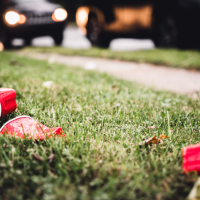3rd Millennium Classrooms’ alcohol education program Alcohol-Wise increases your students’ knowledge of alcohol and has been shown to result in behavior change. It also saves you money. Here’s are 7 ways Alcohol-Wise can save your campus money:
- Alcohol-Wise reduces participation in high-risk drinking behaviors
- Alcohol-Wise reduces negative consequences associated with drinking
- Alcohol-Wise increases student retention and results in higher GPAs
- Alcohol-Wise protects your campus’ good reputation
-
Providing prevention education reduces alcohol violation
-
Prevention is cheaper than intervention
- Alcohol-Wise is scalable
#1 Alcohol-Wise reduces participation in high-risk drinking behaviors
Students who receive prevention education about alcohol make smarter decisions about their drinking habits. A recent study on Alcohol-Wise showed that users who completed our course saw a 9.5% reduction in drinking game participation and a 28% decrease in heavy drinking.⁴ Additionally, another study discovered that 36% of users saw a decrease in their peak BAC.¹ Alcohol-Wise gives students a basic understanding of how alcohol affects their body and how to make smart decisions involving drinking. Armed with this knowledge, students are less likely to make destructive decisions and experience negative consequences often associated with heavy drinking.
#2 Alcohol-Wise reduces negative consequences associated with drinking
A significant number of students admitted to emergency departments are there because of alcohol-related injuries. One university reported that 1 of every 15 undergraduates seen in the campus emergency department had alcohol-related problems.⁵ Additionally, college students will be involved in 1,000 alcohol-related motor vehicle deaths per year.³ With alcohol prevention education, students are less likely to experience these adverse outcomes because they will make smarter, more informed decisions when drinking.
#3 Alcohol-Wise increases student retention and results in higher GPAs
Students who do not drink, or who drink responsibly, tend to make better grades on average and are more likely to come to class. In one study, results showed that students who took Alcohol-Wise had GPAs that were half of a point higher than their classmates who had not. Additionally, the study showed that retention rates for students who have taken some sort of alcohol prevention education were 18% higher than those who had not.⁶ To put that in perspective, one university estimated that with their student population of 13,187 and an average cost of tuition of $7,415, a 5% loss in that population could create a revenue loss of over 4 million dollars. ⁷ For larger universities, a 5% loss would be a much greater cost.
#4 Alcohol-Wise protects your campus’ good reputation
“Student Dies After Possible Hazing Episode at [Your University]”
“A [Your University] Student Nearly Dies from Alcohol Poisoning”
We can all agree we don’t want headlines like that. We also don’t want students to be involved in criminal activity, but studies show that 10% of students who used alcohol had committed crimes in the current academic year.² Neither of these is good for the image or well being of your school, but by educating your students about alcohol, you can create a safer environment for all of your students. Protecting your reputation has many benefits, from motivating future students to attend your university to creating an environment that makes students want to remain at your university.
#5 Providing prevention education reduces alcohol violations
Every time a student has an alcohol-related violation on campus, it costs. Time. Money. Energy. Paperwork. By providing prevention education now, you can help minimize problems in the future. Additionally, throughout our 20 years of providing behavior-change courses, we have observed that colleges that use Alcohol-Wise multiple years in a row tend to see fewer alcohol violations with continued use.
#6 Prevention is cheaper than intervention
Paying for a prevention program is much cheaper than paying for costs that can occur later on. For instance, one study showed that for every $1 spent on prevention programming, returned benefits and savings average over 100% of invested cost.⁷ For proven effective programming, such as Alcohol-Wise, returned benefits and savings can account for over 1000% of investment. This means that for every Alcohol-Wise course you buy, you can expect $8-$80 in returned benefits and savings. For colleges using unlimited subscription pricing, savings are even greater.
#7 Alcohol-Wise is scalable
Whether you have 100 incoming freshmen or 10,000, Alcohol-Wise can work for you. For campuses with smaller incoming classes, choose to pay per student (at just $8/enrollment). For campuses with large incoming classes, get unlimited enrollments for the year for $13,000. You are never locked into a contract, and we also have bundling options if you want to use any of our other prevention education programs and courses. Whatever your budget needs, 3rd Mil has an option for you.
Visit our website to download a free PDF of this blog post.
Implement Alcohol-Wise on your campus today to help your
students make better decisions and save you money!
Sign up for your alcohol education programming needs.




